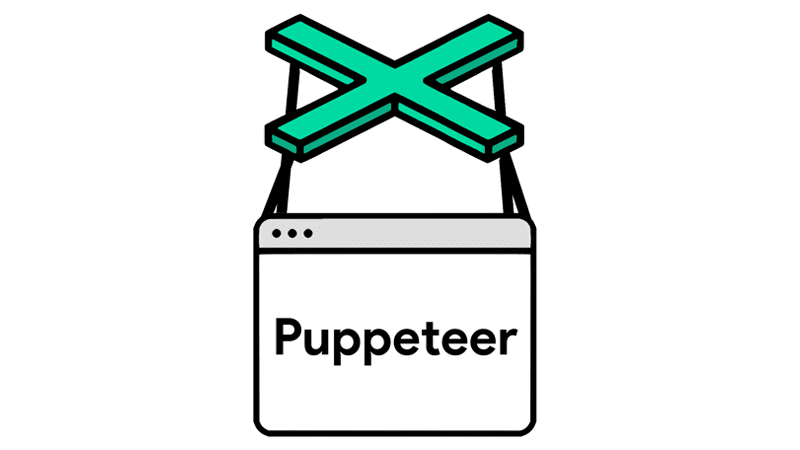Web Scraping Profesional con Puppeteer: Guía Completa 2025
Aprende a crear scrapers robustos y eficientes con Puppeteer. Técnicas avanzadas, ejemplos prácticos y mejores prácticas.

Web Scraping Profesional con Puppeteer
Puppeteer se ha convertido en una de las herramientas más potentes para web scraping y automatización web. En esta guía, aprenderás a crear scrapers eficientes y robustos que pueden manejar sitios web modernos y dinámicos.
Puppeteer es una biblioteca de Node.js que proporciona una API de alto nivel para controlar Chrome/Chromium. Es mantenida por el equipo de Chrome DevTools.
Configuración Inicial
Primero, configuremos nuestro proyecto:
mkdir puppeteer-scraper
cd puppeteer-scraper
npm init -y
npm install puppeteerEstructura Base del Scraper
Este es nuestro scraper base optimizado:
const puppeteer = require("puppeteer");
class WebScraper {
constructor() {
this.browser = null;
this.page = null;
}
async initialize() {
this.browser = await puppeteer.launch({
headless: "new",
args: ["--no-sandbox", "--disable-setuid-sandbox", "--disable-dev-shm-usage", "--disable-accelerated-2d-canvas", "--disable-gpu"],
defaultViewport: { width: 1920, height: 1080 },
});
this.page = await this.browser.newPage();
// Optimizaciones de rendimiento
await this.page.setRequestInterception(true);
this.page.on("request", (request) => {
if (["image", "stylesheet", "font"].includes(request.resourceType())) {
request.abort();
} else {
request.continue();
}
});
}
async close() {
await this.browser.close();
}
}Técnicas Avanzadas de Scraping
1. Manejo de Paginación
async function scrapePaginatedContent(url, maxPages = 5) {
const scraper = new WebScraper();
await scraper.initialize();
const results = [];
for (let page = 1; page <= maxPages; page++) {
await scraper.page.goto(`${url}?page=${page}`);
// Esperar a que el contenido se cargue
await scraper.page.waitForSelector(".item-container");
const pageData = await scraper.page.evaluate(() => {
const items = document.querySelectorAll(".item");
return Array.from(items).map((item) => ({
title: item.querySelector(".title")?.textContent,
price: item.querySelector(".price")?.textContent,
description: item.querySelector(".description")?.textContent,
}));
});
results.push(...pageData);
// Verificar si hay más páginas
const hasNextPage = await scraper.page.$(".next-button");
if (!hasNextPage) break;
}
await scraper.close();
return results;
}2. Manejo de Autenticación
async function scrapeWithAuth(url, credentials) {
const scraper = new WebScraper();
await scraper.initialize();
// Navegar a la página de login
await scraper.page.goto(credentials.loginUrl);
// Llenar formulario de login
await scraper.page.type("#username", credentials.username);
await scraper.page.type("#password", credentials.password);
// Enviar formulario y esperar navegación
await Promise.all([scraper.page.waitForNavigation(), scraper.page.click("#login-button")]);
// Continuar con el scraping...
}3. Manejo de Contenido Dinámico
async function scrapeInfiniteScroll() {
const scraper = new WebScraper();
await scraper.initialize();
await scraper.page.goto(url);
let previousHeight;
let items = new Set();
while (true) {
// Obtener elementos actuales
const newItems = await scraper.page.evaluate(() => {
const elements = document.querySelectorAll(".item");
return Array.from(elements).map((el) => el.textContent);
});
// Agregar nuevos elementos al conjunto
newItems.forEach((item) => items.add(item));
// Scroll hasta el final
previousHeight = await scraper.page.evaluate("document.body.scrollHeight");
await scraper.page.evaluate("window.scrollTo(0, document.body.scrollHeight)");
await scraper.page.waitForTimeout(1500);
// Verificar si hemos llegado al final
const currentHeight = await scraper.page.evaluate("document.body.scrollHeight");
if (currentHeight === previousHeight) break;
}
return Array.from(items);
}Mejores Prácticas y Optimizaciones
1. Control de Velocidad y Delays
class RateLimiter {
constructor(maxRequests, timeWindow) {
this.maxRequests = maxRequests;
this.timeWindow = timeWindow;
this.tokens = maxRequests;
this.lastRefill = Date.now();
}
async waitForToken() {
const now = Date.now();
const timePassed = now - this.lastRefill;
this.tokens += Math.floor(timePassed / this.timeWindow) * this.maxRequests;
this.tokens = Math.min(this.tokens, this.maxRequests);
this.lastRefill = now;
if (this.tokens <= 0) {
await new Promise((resolve) => setTimeout(resolve, this.timeWindow));
return this.waitForToken();
}
this.tokens--;
return true;
}
}2. Manejo de Errores y Reintentos
async function withRetry(fn, maxRetries = 3, delay = 1000) {
for (let i = 0; i < maxRetries; i++) {
try {
return await fn();
} catch (error) {
if (i === maxRetries - 1) throw error;
console.log(`Intento ${i + 1} fallido, reintentando...`);
await new Promise((resolve) => setTimeout(resolve, delay * (i + 1)));
}
}
}Ejemplo Completo: Scraper de Productos
async function scrapeProducts(url) {
const scraper = new WebScraper();
const rateLimiter = new RateLimiter(10, 1000); // 10 requests por segundo
try {
await scraper.initialize();
const products = [];
let hasNextPage = true;
let pageNum = 1;
while (hasNextPage) {
await rateLimiter.waitForToken();
await withRetry(async () => {
await scraper.page.goto(`${url}?page=${pageNum}`);
const pageProducts = await scraper.page.evaluate(() => {
return Array.from(document.querySelectorAll(".product-card")).map((product) => ({
name: product.querySelector(".product-name")?.textContent,
price: product.querySelector(".product-price")?.textContent,
description: product.querySelector(".product-description")?.textContent,
rating: product.querySelector(".product-rating")?.textContent,
}));
});
products.push(...pageProducts);
hasNextPage = (await scraper.page.$(".next-page:not(.disabled)")) !== null;
pageNum++;
});
}
return products;
} catch (error) {
console.error("Error durante el scraping:", error);
throw error;
} finally {
await scraper.close();
}
}Conclusiones
El web scraping con Puppeteer ofrece grandes posibilidades para la automatización y extracción de datos. Las claves para un scraper exitoso son:
- Manejo robusto de errores
- Control de velocidad de requests
- Optimización de recursos
- Código mantenible y reutilizable
Recuerda siempre revisar los términos de servicio de los sitios web que planeas scrapear y mantener un comportamiento ético en tus actividades de scraping.
Recursos Adicionales
¿Te resultó útil esta guía? Comparte tus experiencias y dudas en los comentarios. ¡Feliz scraping!